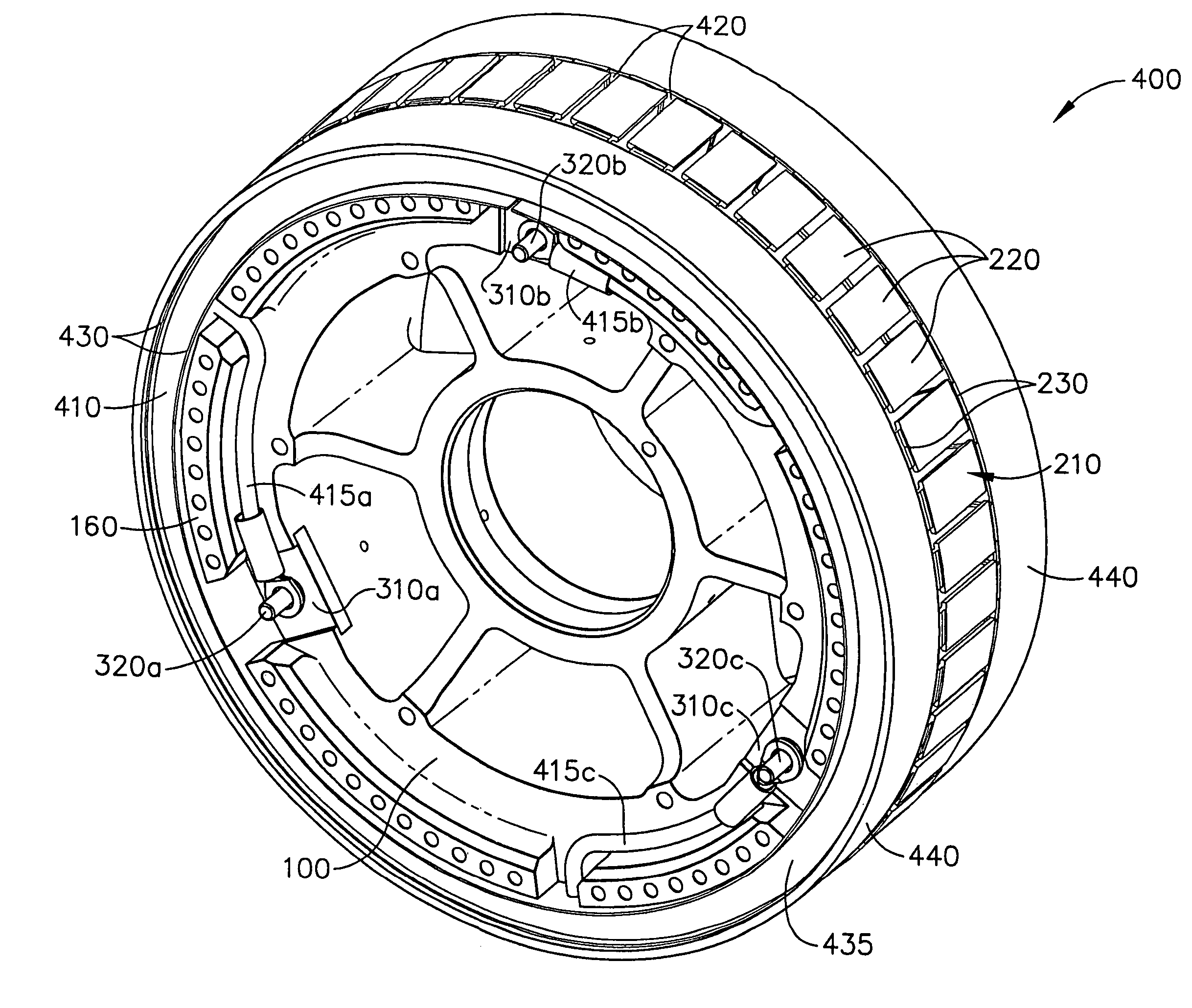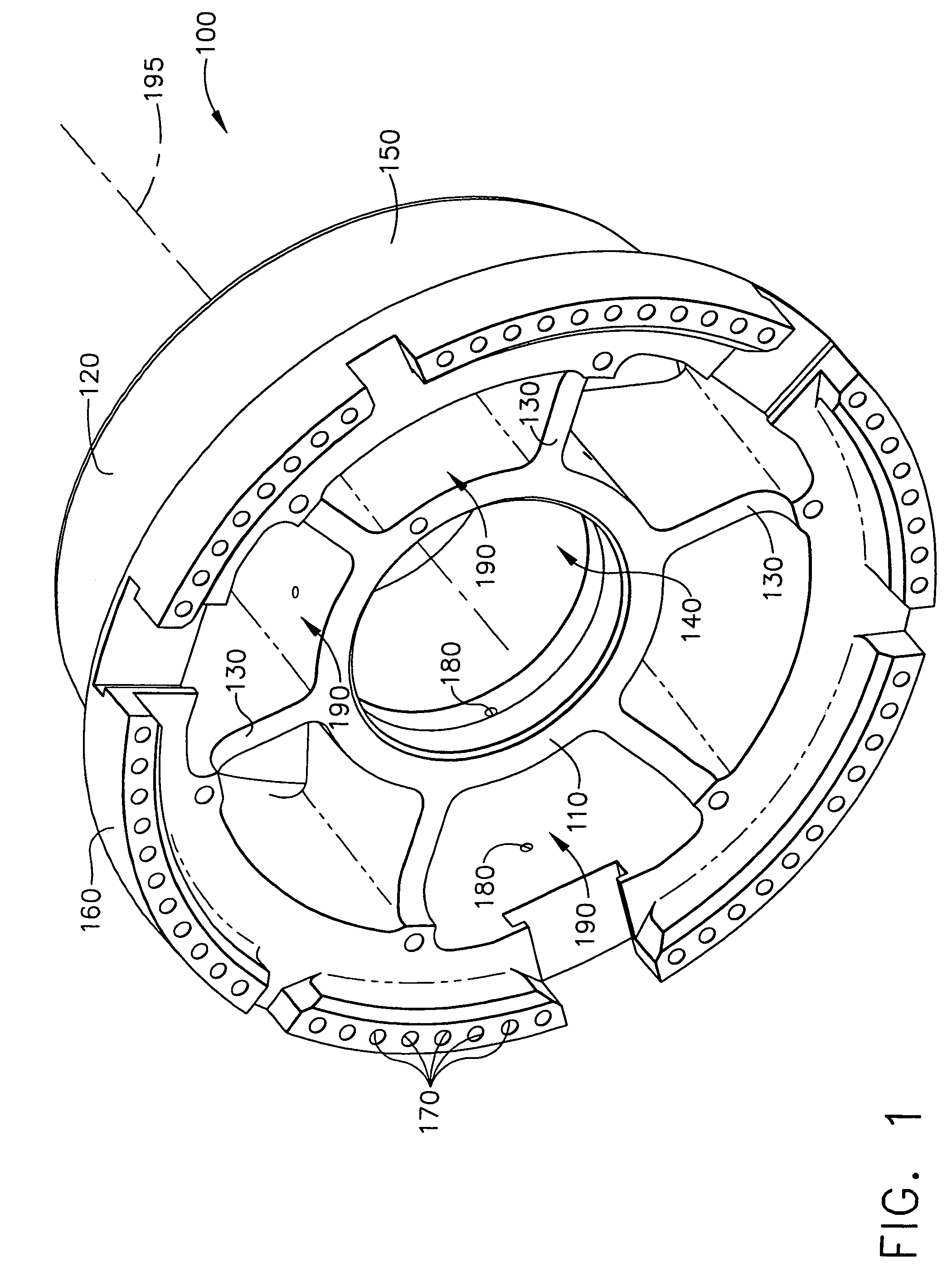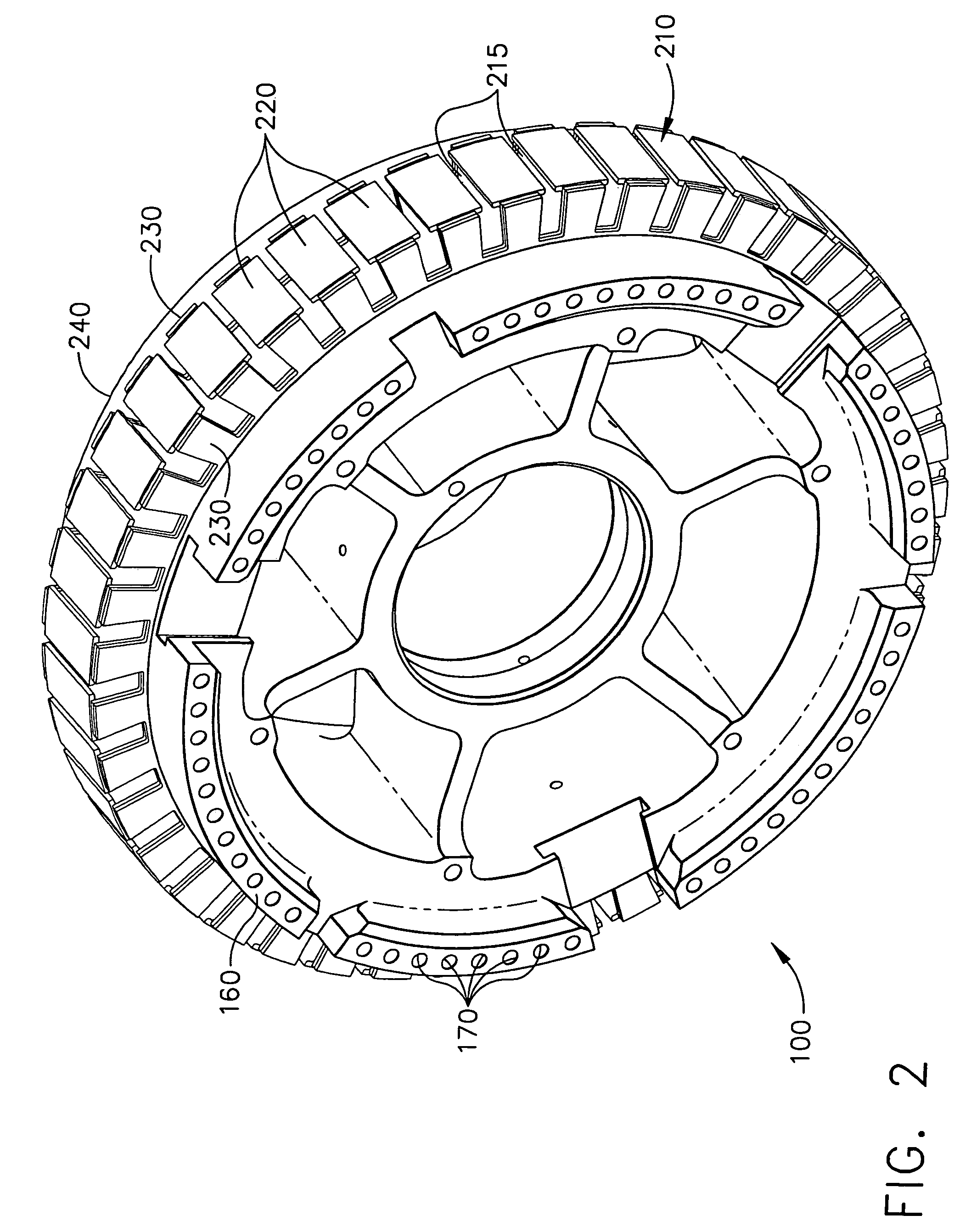Rotor assembly method
a rotor and assembly method technology, applied in the direction of magnetic circuit rotating parts, magnetic circuit shape/form/construction, magnetic bodies, etc., can solve the problems of imbalances in the rotor, additional imbalances, and limitations of the exciter rotor, and achieve the effect of significantly reducing the radial width of the lamination
- Summary
- Abstract
- Description
- Claims
- Application Information
AI Technical Summary
Benefits of technology
Problems solved by technology
Method used
Image
Examples
Embodiment Construction
[0021]Referring to FIG. 1, a hub 100 is shown that provides the main support structure of an exciter rotor in accordance with one embodiment of the present invention. The hub 100 includes an inner cylindrical structure 110 and an outer cylindrical structure 120 that are coupled to one another by way of six spokes 130. The inner cylindrical structure 110 in particular defines a cylindrical internal cavity 140 through which a generator shaft (see FIG. 6) protrudes when a complete generator assembly (see FIG. 7) is assembled. The inner cylindrical structure 110, outer cylindrical structure 120 and spokes 130 define multiple internal cavities 190. The outer cylindrical structure 120 includes both a cylindrical support surface 150 and a retaining rim 160. As will be discussed further with respect to FIG. 2, the support surface 150 supports the laminations and wire windings of the exciter rotor. The retaining rim 160 includes multiple holes 170, which can be filled with material during th...
PUM
| Property | Measurement | Unit |
|---|---|---|
| outer circumference | aaaaa | aaaaa |
| DC current | aaaaa | aaaaa |
| AC current | aaaaa | aaaaa |
Abstract
Description
Claims
Application Information
 Login to View More
Login to View More - R&D
- Intellectual Property
- Life Sciences
- Materials
- Tech Scout
- Unparalleled Data Quality
- Higher Quality Content
- 60% Fewer Hallucinations
Browse by: Latest US Patents, China's latest patents, Technical Efficacy Thesaurus, Application Domain, Technology Topic, Popular Technical Reports.
© 2025 PatSnap. All rights reserved.Legal|Privacy policy|Modern Slavery Act Transparency Statement|Sitemap|About US| Contact US: help@patsnap.com



